

CODE UPDATE

Update #14 Top Emergency Exits (2.14.1.5)
An emergency exit with a cover is required in the top of all elevator enclosures except elevators in partially enclosed hoistways. (See 2.14.1.5)
Elevators in partially enclosed hoistways must be equipped with the means to facilitate emergency evacuation of passengers. A top emergency exit is not required, however, it is permitted. (See 2.14.1.5.2)
The top emergency exit cover must open outward and be securely attached to the car top by a chain or hinges. The chain may not be longer than 12 inches.
The emergency exit and suspended ceiling are required to provide openings of no less than 400 square inches and no side may be less than 16 inches in length. (A rectangle with an area of 400 square inches and one side measuring 16 inches in length would have an adjacent side of 25 inches in length.)
Equipment located in or on the car may be located directly above the exit opening under either of the following conditions:
1 - the equipment is not less than 42 inches above the top of the car (43 inches is the minimum dimension required for the height of the top of car refuge space (See 2.4.12 for electric elevators or 3.4.7 for hydraulic elevators)); or
2 - the exit is located in the car top and suspended ceiling, with respect to the equipment, to allow the unobstructed passage of a parallel piped volume of 12 inches X 20 inches X 59 inches at an angle of not less than 60 degrees from the horizontal. (See the following image)
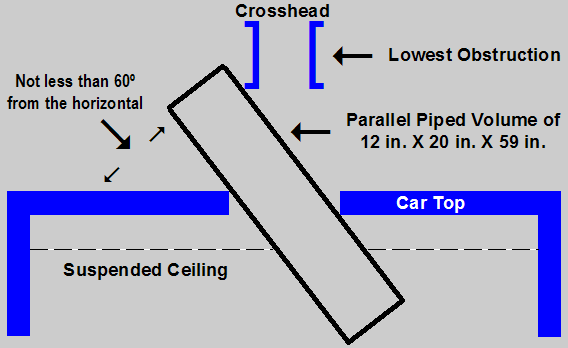
Equipment Located Above the Top Emergency Exit
A clear headroom of 80 inches (6 feet 8 inches) shall be maintained from the car floor if the exit panel of the suspended ceiling swings downward.
In areas that are not in seismic risk zones 2 or greater, the emergency exit cover shall be capable of being opened without the use of "special" tools and from the car top only. Quite often barrel bolts, sash locks, cupboard latches, or wing nuts and bolts are used to lock the cover.
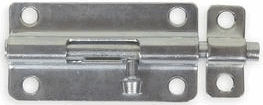
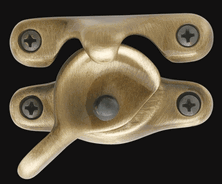
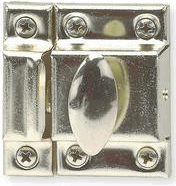
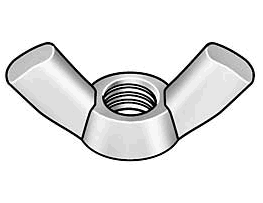
Barrel Bolt, Sash Lock, Cupboard Latch and Wing Nut
If the elevator is located in a seismic risk zone 2 or greater, the emergency exit cover must be provided with a keyed lock that is capable of being opened from inside the car with a key and from the car top without the use of "special" tools. (See 8.4.4.1.1 - This arrangement is necessary to facilitate the thorough inspection of the car top and hoistway following a seismic event strong enough to trigger seismic and/or displacement devices. The responding technician would access the car top by way of the emergency exit.) Quite often security boltlocks are used to lock the cover.
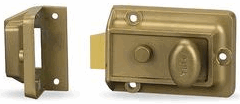
Security Boltlock
Every emergency exit cover must be provided with an electrical device that will prevent the operation of the elevator (except in seismic risk zone 2 or greater - see below) if the cover is open more than 2 inches.
The device must be designed so that it:
1 - is positively opened
2 - cannot be closed accidentally when the cover is opened
3 - can only be reset when the cover is within 2 inches of being closed and only from on top of the car
4 - is protected from mechanical damage
Some companies provide a combination of the following devices as an emergency exit cover electrical device. The circuit that is to be monitored is brought into the receptacle and attached to the connections associated with the flat "power" blades. The receptacle is attached to the car top. The plug is attached to the exit cover. The two flat "power" blades of the plug are wired in such a way as to provide a jumper for the receptacle. When the plug is inserted into the receptacle the circuit is completed. This type of device fulfills the above 4 requirements.
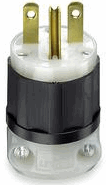

Example of a Plug & Receptacle Emergency Exit Cover Contact
(Elevator is Not Installed in Seismic Risk Zone 2 or Greater)
If the elevator is located in a seismic risk zone 2 or greater, the emergency exit cover electrical device must be a car door electric contact conforming to the 4 requirements above. (See 8.4.4.1.2) When this contact is open the speed of the car must not be greater than 150 feet per minute.
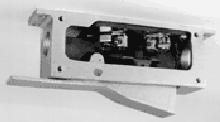
Example of a Gate Switch Emergency Exit Cover Contact
(Elevator is Installed in Seismic Risk Zone 2 or Greater)
![]()
![]()
![]()
 E-mail Bob Desnoyers with your top emergency exit comments
E-mail Bob Desnoyers with your top emergency exit comments 
Welcome/Contact ![]() Résumé
Résumé ![]() Elevator Utilities
Elevator Utilities ![]() Hydraulic Utilities
Hydraulic Utilities
Electric Utilities ![]() Odds & Ends
Odds & Ends ![]() Code Updates
Code Updates ![]() Testimonials
Testimonials
